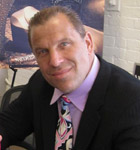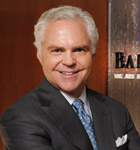In January 2008, Pittsburgh Teachers CU, one of Pittsburgh’s longest-standing credit unions, changed its name to Riverset Credit Union, a name that reflected its increasingly diverse membership. In June of 2009, the credit union made the biggest move since its founding in 1934: it expanded to serve all people who live, work, worship, or attend school in Allegheny, Beaver, and Butler counties. At the helm during that transition was CEO Christine Chojnicki, who, in her 33 years with the credit union, has seen it grow from $6 million to more than $120 million in assets. We caught up with Chojnicki to learn about what’s next for the credit union.
How did you get into the business?
I was studying accounting in college, and thought a work study would be a good way to get experience, so I started working part-time at what was then the Pittsburgh Teachers Credit Union. When I obtained an associate’s degree,I became a full-time teller and worked my way up.
Did you intend to stay in the credit union industry?
I initially didn’t know anything about credit unions, which I don’t think is uncommon; there’s a general lack of education about what role they play in the financial industry. But, credit unions offer a personal touch. It’s a common stereotype that when you go into a bank, you’re in an assembly line; no one knows you. While that may not always be the case, at Riverset we know our members’ names and stories, and want to build relationships with them so we can help them. The ability to make that kind of difference is why I’ve stayed here.
Was it a challenge to ascend to the CEO position?
The credit union didn’t even have a CEO position until it moved from two rooms in the Pittsburgh Board of Education to its own building in 2005. The gentleman hired as our first CEO told me in order to move up I’d need more than an [associate] degree. At that time I didn’t understand how studying history and literature would help me in my role, so I completed the Credit Union National Association’s (CUNA’s) Certified Credit Union Executive Program (CCUE). That meant more in the industry than a bachelor’s degree. Obtaining my CCUE was one of the reasons I was chosen to replace the CEO after three years.
 The business grew dramatically in the years after you were promoted; how did that happen?
The business grew dramatically in the years after you were promoted; how did that happen?
We were a single-sponsor credit union, only open to employees of the Pittsburgh Board of Education and their family members, until 2005, when we merged with an area hospital credit union, opening our membership to health-care workers in our region. At that time, we converted to a multi-seg[ment] institution and grew to represent more than 100 companies and organizations in our area prior to securing another merger with a low-income designated community credit union. It was at that time that we began looking for ways to change our brand. In 2008 we changed our name, and in late 2009 we became a community-chartered credit union. It was quite an accomplishment, because we were the first state-chartered credit union to receive approval for a multi-county community charter since there were rule changes in Pennsylvania that made obtaining such a charter more difficult due to opposition from the Pennsylvania Bankers Association.
Is that what led you to emphasize community involvement?
To some extent, yes. Back in 2010, we asked ourselves what we wanted to be, who is Riverset and decided to come together as a team to be more involved in the community and help our fellow neighbors. We make it a point, even with a small staff, to have at least one community-involvement activity each month. We even changed the way we hire people, looking for employees with a track record of volunteering. The most important thing we can give is our time and when we do, and see the impact it can make, it’s really rewarding.
You’re also very high-tech for a credit union. How has that helped your company attract more clients?
We only have two physical offices in one of the three countries we serve, and the younger generation wants to be served 24/7. So in 2011, in addition to our conventional channels of utilization including an expansive ATM network relationship with an area financial institution and shared branching, we changed the way we service our customers. We upgraded our online banking and bill pay platforms and recently implemented mobile banking. We’ve also entered into the realm of social media, ultimately obtaining approximately 300 Facebook fans within a month. That really lays the foundation for the future.
Was there a point at which you knew you’d succeeded?
I used to attend area meetings with other credit union managers/CEOs, and found myself asking my peers a lot of questions not as to what they were doing but how they were doing it. I always wondered if anyone would ever ask me “how.” Those tables have now turned and it is a good feeling.

